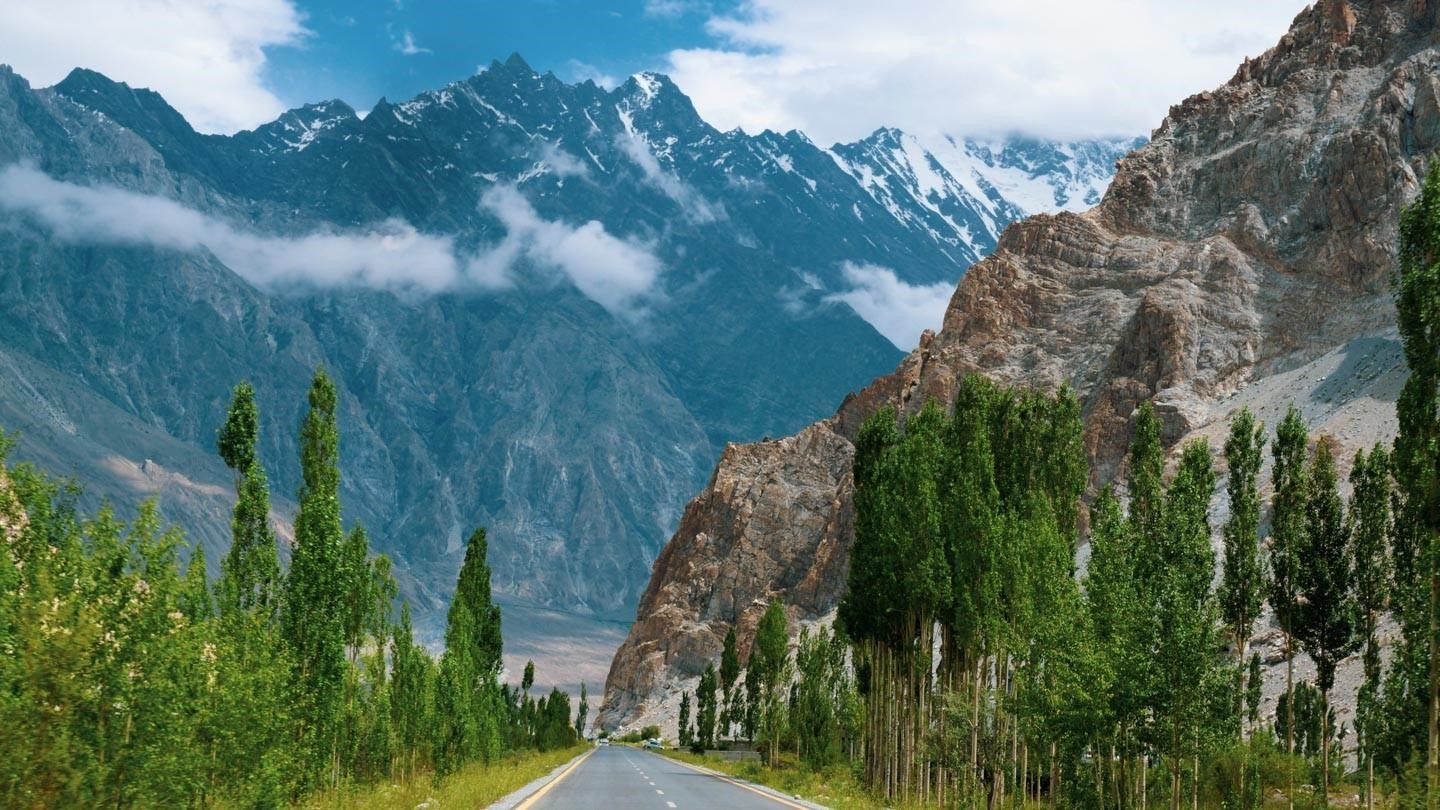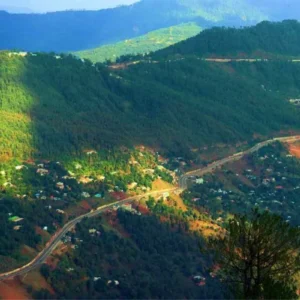Description
Discover the breathtaking beauty of Gilgit and Hunza, two of Pakistan’s most captivating northern regions. Known for their dramatic landscapes, rich cultural heritage, and warm hospitality, these areas offer an unforgettable travel experience. This guide provides an in-depth look at what to expect and how to make the most of your visit to these stunning locations.
Experience the enchanting beauty of Gilgit and Hunza with Pak Tours & Travel. These stunning regions in the Gilgit-Baltistan province of Pakistan offer a perfect blend of breathtaking landscapes, rich cultural heritage, and outdoor adventures.
Discover Gilgit
Gilgit, the capital city of Gilgit-Baltistan, is a vibrant hub that serves as a gateway to the stunning Karakoram range. Key highlights include:
- Kargah Buddha: An ancient rock carving dating back to the 7th century, offering a glimpse into the region’s Buddhist history.
- Gilgit Bridge: One of the largest suspension bridges in Asia, providing stunning views of the Gilgit River.
- Local Bazaars: Explore the bustling markets where you can find traditional handicrafts, gemstones, and local delicacies.
- Naltar Valley: Known for its colorful lakes and picturesque landscapes, Naltar Valley is perfect for skiing in the winter and trekking in the summer.
Explore Hunza Valley
Hunza Valley, often referred to as “Heaven on Earth,” is renowned for its stunning beauty and warm hospitality. Key highlights include:
- Rakaposhi View Point: Enjoy breathtaking views of Rakaposhi, one of the highest peaks in the world.
- Altit and Baltit Forts: Visit these ancient forts that offer a glimpse into the rich history and culture of the Hunza people.
- Attabad Lake: A turquoise gem created by a landslide in 2010, perfect for boating and relaxation.
- Eagle’s Nest: A vantage point offering panoramic views of the Hunza Valley and the surrounding peaks.
- Karimabad: The main town in Hunza, is known for its friendly locals, vibrant bazaars, and delicious apricots.
Why Visit Gilgit and Hunza?
Scenic Beauty Gilgit and Hunza are renowned for their stunning landscapes. From towering mountain peaks to lush valleys and sparkling lakes, the natural beauty of these regions is unparalleled. Key highlights include the serene Hunza Valley, the majestic Rakaposhi Peak, and the turquoise waters of Attabad Lake.
Cultural Richness The regions offer a deep cultural experience with their unique traditions and heritage. The people of Gilgit and Hunza are known for their hospitality and vibrant customs. You can explore historic sites such as Baltit Fort and engage with local communities to learn about their way of life.
Adventure Opportunities For adventure enthusiasts, Gilgit and Hunza provide numerous outdoor activities. Whether it’s trekking, hiking, or exploring high-altitude passes, there’s no shortage of thrilling experiences. The area is also a gateway to some of the world’s highest peaks and challenging climbing routes.
Top Attractions in Gilgit and Hunza
Hunza Valley A must-visit destination, Hunza Valley is famed for its stunning landscapes and friendly people. Explore the ancient Baltit Fort, stroll through Karimabad, and enjoy panoramic views from Eagle’s Nest.
Attabad Lake Formed by a landslide in 2010, Attabad Lake is a spectacular sight with its crystal-clear, turquoise waters. You can enjoy boat rides and admire the surrounding mountains.
Khunjerab Pass Located at the Pakistan-China border, Khunjerab Pass is one of the highest border crossings in the world. It offers incredible views and a chance to experience high-altitude environments.
Gilgit City The bustling city of Gilgit serves as a gateway to the northern regions. Visit the Gilgit Fort, explore local markets, and enjoy the beautiful views of the Gilgit River.
Gilgit and Hunza offer some of the most spectacular trekking options in Pakistan. Here are a few popular treks you might consider:
1. Rakaposhi Base Camp Trek
- Duration: 3-4 days
- Difficulty: Moderate
- Highlights: This trek takes you to the base camp of Rakaposhi, one of the highest peaks in the Karakoram range. You’ll pass through lush meadows, and dense forests, and enjoy stunning views of the Rakaposhi and Diran peaks.
2. Fairy Meadows and Nanga Parbat Base Camp Trek
- Duration: 5-7 days
- Difficulty: Moderate to Challenging
- Highlights: Starting from Fairy Meadows, this trek leads you to the base camp of Nanga Parbat, the ninth-highest mountain in the world. The trek offers breathtaking views of the mountain and the surrounding glaciers.
3. Passu Glacier Trek
- Duration: 1-2 days
- Difficulty: Easy to Moderate
- Highlights: This short trek takes you to the stunning Passu Glacier, offering panoramic views of the Passu Cones and the surrounding peaks. It’s a great option for those with limited time.
4. Batura Glacier Trek
- Duration: 10-12 days
- Difficulty: Challenging
- Highlights: One of the longest glaciers outside the polar regions, the Batura Glacier trek offers an adventurous journey through remote valleys, high-altitude meadows, and spectacular mountain scenery.
5. K2 Base Camp and Gondogoro La Trek
- Duration: 15-20 days
- Difficulty: Very Challenging
- Highlights: This iconic trek takes you to the base camp of K2, the second-highest mountain in the world, and crosses the challenging Gondogoro La pass. It’s a demanding trek but offers unparalleled views of some of the highest peaks on the planet.
6. Ultar Sar Base Camp Trek
- Duration: 2-3 days
- Difficulty: Moderate
- Highlights: This trek offers stunning views of Ultar Sar and Ladyfinger Peak. It’s a relatively short trek but provides a great introduction to the trekking opportunities in Hunza.
These treks cater to various levels of experience and fitness, ensuring there’s something for everyone. If you need more details or assistance in planning your trek, feel free to ask!
Travel Tips
Accommodation Book your hotels in advance, especially during peak tourist seasons. Options range from luxurious lodges to cozy guesthouses.
Weather Pack for varying weather conditions, as temperatures can fluctuate, especially at higher altitudes.
Transportation Opt for flights between Islamabad and Gilgit for a quicker journey. Use private vehicles or taxis for local travel.
Health & Safety Carry necessary medications and ensure you have travel insurance. Stay hydrated and be cautious of altitude sickness.
Cultural Etiquette Respect local customs and traditions. Learning a few phrases in the local languages can enhance your experience.
Gilgit and Hunza offer a unique blend of natural beauty, cultural richness, and adventure. With this guide, you’re well-equipped to explore these remarkable northern regions of Pakistan. Whether you’re captivated by the stunning landscapes, intrigued by the local culture, or seeking thrilling adventures, Gilgit and Hunza promise an unforgettable journey.
Book Your Adventure Today!
Don’t miss the chance to explore the magical regions of Gilgit and Hunza. Contact us to book your trip and embark on an unforgettable journey through the heart of northern Pakistan.
Itinerary
Arrive at Islamabad International Airport. Transfer to a hotel and relax. Explore local attractions or rest.
Fly from Islamabad to Gilgit. Check-in at your hotel in Gilgit. Explore Gilgit Fort and the Gilgit River. Overnight in Gilgit.
Drive to Hunza Valley. Check-in at your Hunza accommodation. Visit Baltit Fort and explore Karimabad. Overnight in Hunza.
Visit Attabad Lake and enjoy boat rides. Explore the village of Passu and admire the Passu Cones. Overnight in Hunza.
Drive to Khunjerab Pass and enjoy the high-altitude views. Return to Hunza in the evening. Overnight in Hunza.
Drive back to Gilgit. Enjoy local sights or relax. Overnight in Gilgit.
Fly back to Islamabad. Free time for shopping or sightseeing. Overnight in Islamabad or prepare for departure.
Transfer to the airport or railway station for your onward journey.
Location
Faq
The best time to visit is from April to October when the weather is pleasant, and the valleys are lush and green. The cherry blossom season in spring and the autumn foliage are particularly beautiful.
The most convenient way is to take a direct flight from Islamabad to Gilgit. Alternatively, you can travel by road via the Karakoram Highway, which takes approximately 15-18 hours.
Pack comfortable clothing, sturdy walking shoes, a hat, sunscreen, and a camera. Don’t forget to bring warm clothes, as the evenings can be chilly.
Yes, it is generally safe to travel to these regions. However, it is always advisable to stay updated on travel advisories and follow local guidelines.
Yes, our tours include opportunities to interact with the local people, learn about their culture, and participate in their traditional activities.
No special permits are required for international tourists. However, it is recommended to carry your identification documents at all times.














